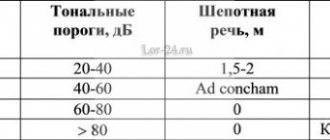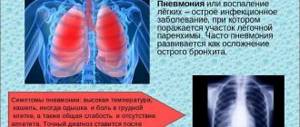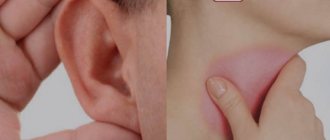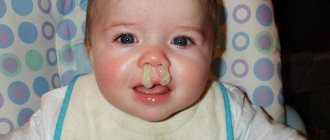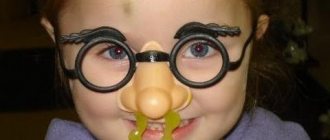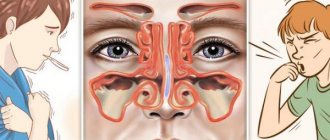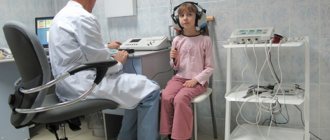Degrees of hearing loss, how is it determined?
Degrees of hearing loss are determined based on sound parameters such as sound strength and pitch.
The first measure is characterized by the strength of the waves on the ears (loudness) and is measured in decibels (dB). Normally, the ear is able to distinguish loudness over a wide range from 0 dB to 100 dB. The most comfortable wave strength varies from 40 to 85 dB. This range includes conversations in calm tones (40-60 dB), the noise of a car engine (70-80 dB).
Sound levels greater than 85 dB, such as screams (90 dB) or thunder (100 dB), can cause discomfort in the ear canals. At a volume of 120 dB (working a jackhammer 1 m from a person) or more, there is a high probability of rupture of the drum membrane and the occurrence of disturbances.
The second criterion is the height (tone) or frequency of sound vibrations. This parameter is calculated in hertz (Hz). The ear is able to differentiate waves in the range from 16 to 20 thousand Hz. Sound pitches up to 16 Hz are called infrasound, and more than 20 thousand Hz are called ultrasound. Such waves are not perceived by humans, but can affect the psycho-emotional state. The most comfortable are the average frequencies of sound waves ranging from 500 to 10 thousand Hz.
Audiometry is a method of determining hearing acuity and the degree of hearing loss by exposing the hearing aid to sound vibrations of varying strength and frequency.
Severity of hearing loss based on sound strength and pitch
Depending on the volume and frequency of sound that the human ear perceives, there are:
- Hearing loss of 1st degree or mild stage is characterized by the perception of waves with a strength in the range of 25-40 dB. At the same time, it is difficult for a person to differentiate quiet speech in a noisy room. The disorders are difficult to self-diagnose, since the patient clearly hears calm speech at a distance of 5 m, and whispers up to 2 m. Problems arise only when extraneous noise appears that disrupts perception.
- Hearing loss of degree 2 or moderate stage is characterized by the perception of waves with a strength in the range of 40-55 dB. A person with stage 2 of the disease cannot hear the rustling of leaves or quiet conversations. For normal perception of the interlocutor’s speech, the patient needs to be at a distance of up to 4 m, and to understand a whisper no more than 1 m; in the presence of background noise, this distance is reduced 2-3 times.
- Hearing loss of 3 degrees or severe stage. It is characterized by a decrease in hearing to 55-70 dB, when a person ceases to perceive quiet speech and whispers, and in order to understand ordinary conversational speech he needs to approach the person at a distance of 1-2 m. Therefore, people at stage 3 of the pathology are recommended to wear sound-amplifying devices and a group is assigned with health restrictions.
- Hearing loss of 4 degrees is characterized by a decrease in the perception of low-intensity sounds in the range from 71 to 90 dB. Communication requires sound-amplifying devices or sign language. A person is assigned a disability.
There are also 4 degrees of hearing loss depending on the perception of the pitch of sounds:
- Stage 1 is characterized by the perception of only low frequencies in the range from 120 to 150 Hz;
- at stage 2, the patient perceives vibrations of sound waves up to 500 Hz;
- at stage 3, waves are perceived in the range of up to 1 thousand Hz;
- at stage 4, a person understands and distinguishes sounds up to 20 thousand Hz.
Development of 1st degree hearing loss - symptoms and treatment
Hearing loss of 1 degree is characterized by a slight deterioration in hearing. The problem can be recognized by the appearance of a feeling of congestion in the ear canals, the appearance of noise in the ears, and deterioration in speech perception. In the absence of therapy, it can progress or become chronic. Hearing loss of the 1st degree in a young child is usually congenital in nature and is associated with disruptions during embryogenesis.
The acquired form is diagnosed in older children and adults against the background of protracted inflammatory diseases of the ear, impaired blood flow to the head, or as a result of injuries or age-related transformations of organs.
Treatment of grade 1 hearing loss is carried out using conservative therapy. In case of illness due to cerebrovascular accident, injections with Nicotinic acid, Papaverine or Dibazol are prescribed.
If pathology develops due to intoxication, treatment includes:
- intravenous or intramuscular administration of sodium adenosine triphosphate or Mannitol;
- therapy aimed at removing toxins from the body;
- taking sedatives (Elenium).
In the chronic form of the initial stage of the disease, the patient is prescribed a course of B vitamins (Pyridoxine, Milgamma), aloe extract, sodium adenosine triphosphate, Galantamine. To stop the inflammatory process, a course of antibacterial drugs (Suprax, Cefexime) is prescribed.
Physiotherapy is actively used to relieve symptoms:
- acupuncture - the impact of special needles on biologically active points responsible for the operation of the ear apparatus;
- magnetotherapy – treatment with a statistical magnetic field;
- phonoelectrophoresis is the targeted effect of ultrasonic waves on body tissues to normalize the flow of biological fluids.
If conservative treatment is ineffective, surgery is prescribed to implant an implant, which improves the perception and transmission of sound impulses.
Children are recommended to supplement their treatment with correctional classes with a speech therapist and a neuropsychiatrist.
Treatment
When symptoms of hearing loss appear in a child, it is very important to begin treatment as soon as possible, since hearing loss can occur very quickly. At the same time, it is much easier to cope with grade 1-2 pathology.
Therapy directly depends on the form of the disease. Thus, bilateral conductive hearing loss is usually treated surgically. With the help of surgical intervention, the structure of the membrane and auditory ossicles is restored, which allows achieving positive results. For minor damage, procedures such as pneumomassage of the membrane and blowing out the ear can be effective. Sensorineural hearing loss is eliminated using conservative methods. For this purpose medications are used. To normalize blood circulation in the inner ear and brain, drugs such as piracetam, Cerebrolysin, etc. are used.
Some medications must be administered intramuscularly. In some cases, intratympanic administration is even indicated, which involves delivering the substance directly to the inner ear. For this purpose, shunts are usually used, which are placed in the membrane.
To eliminate the neurosensory form of the pathology, antispasmodics and vasodilators - no-shpu or papaverine - are often used. The use of drugs that improve the transmission of impulses along nerve fibers is also indicated. These include dibazol, oxazil. To improve metabolic processes in tissues, you need to use vitamin complexes. Such drugs as kudesan and evitol are highly effective.
Sensorineural hearing loss responds well to physical therapy. The doctor may prescribe reflexology and electrophoresis. If treatment does not help and the disease progresses, the specialist will prescribe the use of a hearing aid.
It will be possible to restore full hearing only at the initial stage of the disease, subject to timely and adequate therapy. Children with complex disabilities can learn sign language to communicate with others.
Speech therapy techniques
The goal of treatment for hearing loss is not only to improve hearing, but also to properly develop speech. That is why children with such problems are necessarily prescribed classes with a speech therapist-defectologist.
Developmental techniques help broaden a child’s horizons, improve fine motor skills and thinking. With their help, the baby gets acquainted with such concepts as size and shape through cartoons. He also develops reading, writing, and counting skills.
Children with minor hearing impairments can practice without using a hearing aid. If your hearing loss is severe and prevents you from fully developing, you should definitely wear this device.
Dr. Komarovsky about hearing loss:
How does grade 2 hearing loss develop, what are the symptoms, treatment
Hearing loss of the 2nd degree is characterized by hearing impairment, namely the patient ceases to hear whispers, telephone calls, simple speech is not perceived at a distance of more than 3 m.
With 2 degrees of conductive hearing loss, both adults and children are prescribed surgical intervention, during which the physiological state of the auditory ossicle and eardrums is restored. If this is not possible, treatment of grade 2 hearing loss is carried out using implants.
When diagnosing grade 2 sensorineural hearing loss and a secondary conductive form, complex therapy is carried out, which is aimed at preventing atrophy of the cellular structures of the inner ear and includes taking medications, including:
- Nootropic medications (Pentoxifylline, Phezam, Semax) whose action is aimed at normalizing blood flow to the auditory nerve and brain and increasing local immunity. The therapeutic course lasts 2 months, after which it is repeated if necessary.
- Antihistamines (Betaserc, Betahistine), the action of which is aimed at relieving symptoms such as dizziness, nausea, vomiting. Helps reduce fluid pressure in the labyrinth and normalize blood flow.
- Reflexology is a physiotherapeutic method in which laser beams are used instead of needles, which are aimed at activating biologically active points responsible for the perception and transmission of sounds. The course lasts 10 days and, if indicated, is repeated a month later.
- Hyperbaric oxygen therapy is a physiotherapeutic method aimed at improving blood flow to the ear apparatus. Involves inhaling a mixture with a high concentration of oxygen.
In the absence of effectiveness of conservative treatment or diagnosis of bilateral hearing loss of degree 2, wearing sound-amplifying devices is indicated.
Development, symptoms and treatment of grade 3 hearing loss
Stage 3 hearing loss develops as a result of lack of treatment or incorrect treatment of stage 2 disease. This form of the disease significantly affects communication functions, since the patient hears practically nothing.
In case of conductive disease, surgical intervention is recommended to restore the functioning of organs. For grade 3 sensorineural hearing loss, drug treatment is prescribed, which includes taking:
- nootropic medications to prevent oxygen starvation of ear cells by normalizing blood flow (Piracetam, Cerebrolysin);
- antihistamines to relieve swelling in the labyrinth, eliminate dizziness and nausea (Betaserc, Betahistine).
Due to difficulties in communication, a grade 3 patient is prescribed a hearing aid for sound perception and assigned a disability group for hearing loss.
Grade 3 hearing loss in a child should be diagnosed before problems with intellectual and speech development appear. As a rule, treatment is carried out through surgery, which is aimed at restoring the physiological structure of organs or implanting implants.
Treatment of hearing loss in children is supplemented by classes with a speech therapist, psychotherapist, and psychologist.
Treatment of hearing loss in a child
It is important to promptly identify and treat hearing loss in a child. An ENT doctor treats chronic otitis media; overgrown adenoids can be removed with a laser (laser adenoid reduction). If a child suffered a birth injury at birth, then treatment methods that improve the functioning of the central nervous system will help improve hearing:
Microcurrent reflexotherapy for sensorineural hearing loss is carried out according to an individual program: 1. Improving the blood supply to the cochlea and auditory nerve (by relieving spasm of the vertebral arteries). 2. Stimulation of the auditory nerve to improve the conduction of nerve impulses through it. 3. Activation of the areas of hearing and speech understanding of the cerebral cortex. 4. Activation of the speech areas of the brain responsible for
- speech understanding,
- desire to engage in verbal contact,
- vocabulary set,
- sentence construction skill.
5. Normalization of cerebral vascular tone leads to a decrease in the production of cerebrospinal fluid (intracranial fluid) and intracranial pressure stabilizes.
6. Reducing excitability in neurotic, disinhibited and aggressive children improves their adaptation in kindergarten and increases the effectiveness of classes with a speech therapist. Drug therapy for sensorineural hearing loss is carried out in between courses of microcurrent reflexology:
— B vitamins and preparations containing phospholipids (lecithin, ceraxon, gliatilin, etc.) are necessary to restore damaged pathways of the nervous system and auditory nerve. - Vascular drugs - improve blood supply to the cochlea and auditory nerve. - Nootropics (Cortexin, Mexidol, Ceraxon, Actovegin, etc.) - nourish and restore the damaged nervous system. — To stabilize intracranial pressure in children, it is preferable to use diuretic herbs (horsetail, fennel, lingonberry leaf) rather than diacarb. And also “horse chestnut” (escusan), which strengthens the vessels of the venous plexuses that produce cerebrospinal fluid and thus reduces intracranial pressure.
Drug therapy for each child is selected strictly individually, depending on the causes of sensorineural hearing loss after the course of the main treatment - Microcurrent reflexology.
The goal of treatment for hearing loss is not only to improve hearing, but most importantly to initiate the proper development of speech and learning skills.
Children with sensorineural hearing loss also need - Classes with a speech therapist-defectologist and a child psychologist: Developmental classes are aimed at broadening their horizons, developing fine motor skills, thinking, studying concepts such as color, size, developing counting, reading and writing skills. Some children can do without hearing aids during classes; others, without hearing aids, do not hear well enough to develop properly. In this case, wearing a hearing aid is mandatory. But hearing and speech will still improve with complex treatment.
If a child has grade 4 hearing loss and has already undergone cochlear implantation surgery. but speech has not developed to the age norm, the child is excitable and does not absorb educational material well; microcurrent reflexology can also help him.
TREATMENT OF CHILDREN WITH A COCHLEAR IMPLANT IS CARRIED OUT ONLY IN THE CENTRAL DEPARTMENT OF THE REACTION CENTER IN SAMARA.
How does grade 4 hearing loss develop, what are the symptoms and how to treat?
Hearing loss of the 4th degree is characterized by serious disturbances in sound perception - the patient ceases to hear quiet speech, perceives only conversations in raised tones at a distance of no more than 1 m.
In children, grade 4 hearing loss can be diagnosed by the lack of reaction in a newborn to loud and sharp sounds, and at the age of up to 1 year by the absence of babbling and humming.
As a rule, treatment of grade 4 hearing loss is not carried out with medication, which is associated with low efficiency, since the pathology develops against the background of serious and irreversible changes in the organs.
Treatment for grade 4 hearing loss does not lead to the restoration of sound perception, so prosthetics are most often used. Implants are installed in the ear canal, which perform the functions of perceiving and transmitting sound waves. For defects of the eardrum, myringoplasty is used, which helps to replace the physiological eardrum with a synthetic one.
Definition of disease
What is hearing loss? This is a violation of sound perception of varying degrees, occurring, depending on the cause, gradually, or progressing rapidly. The disease affects mainly older people and has an age-related predisposition, but it is also observed in young people and newborns.
There are three types of hearing loss:
- Conductive hearing loss (associated with problems with the conduction of sounds through the outer and middle ear into the inner ear);
- Neurosensory (the inner ear, vestibulocochlear nerve, auditory centers of the brain are affected);
- Mixed (combines symptoms of conductive and neurosensory forms).
Hearing damage can range from being unable to hear whispers to being unable to hear loud sounds at short distances.
To make an accurate diagnosis, a number of studies are carried out:
- Otoscopy (examination of the outer ear and eardrum with a special device);
- Audiometry (carried out in speech or tonal form);
- Tuning fork tests (a study using different-frequency tuning forks makes it possible to differentiate sensorineural from conductive hearing loss);
- Tympanometry (the study allows you to determine the degree of mobility of the eardrum and auditory ossicles, the threshold of the acoustic reflex);
- Computed or magnetic resonance imaging;
- Stabilography (a method for determining lesions of the vestibular apparatus that appear in most cases of sensorineural hearing loss);
- Impedansometry (audiological examination of differential diagnosis, including tympanometry and recording of the acoustic reflex).
Features of hearing loss in children
Particular attention is paid to the development of the hearing system in children, which is associated with the inability to express their emotions and feelings in infancy. For early diagnosis of the stage of hearing loss in children in the maternity ward, a special study of auditory evoked potentials is carried out.
The pathology becomes dangerous if it is not diagnosed in a timely manner in preschool age. As a rule, the disease is diagnosed at the age of 4-5 years, when parents turn to a speech therapist regarding speech development disorders.
You can independently determine hearing loss in children and its degree using the following parameters:
- during the newborn period, the child does not respond to loud speech or sharp sounds;
- at 4 months the baby does not babble and does not respond to the mother’s voice;
- at 2 years old the child has no speech, he does not respond to his name;
- after 4 years of age, a preschooler cannot hear whispers, and against the background of speech underdevelopment, difficulties arise in learning to write and read;
- gait disturbance, frequent dizziness.
Preventing hearing problems
Hearing is one of the most important functions, since with the help of it we interact with the outside world. The correct formation of the hearing aid starting from childhood is extremely important. Violation of this ability can lead to problems with the child’s adaptation in society and developmental delays. With early detection of hearing loss, in most cases it is possible to achieve stabilization of hearing and its restoration.
Prevention of hearing loss in children implies a correct lifestyle for the expectant mother, and then prevention of colds in the child, vaccination, and avoidance of ototoxic drugs that can cause hearing complications.
Does the degree depend on the form of deafness?
Depending on the reasons that led to the development of the disease, several forms are distinguished.
Conductive
This form of the disease is associated with the appearance of obstacles in the path of sound waves. Primary conductive disorder is congenital and occurs as a result of overgrowth of the ear canal, proliferation of fibrous tissue in the middle ear area, or other anomalies.
The secondary form is not hereditary and is a consequence of previous diseases of infectious and inflammatory etiology, for example acute or chronic otitis media. Often, disorders occur when there is injury or obstacles to the passage of a sound wave: the formation of a boil in the ear canal, the penetration of a foreign object, the formation of a cerumen plug.
Pseudoconductive secondary form of partial hearing loss is associated with brain dysfunctions, which can be congenital or acquired.
Neurosensory
This form is associated with pathologies of the auditory nerve or inner ear, resulting in atrophy of the cells that are responsible for transmitting the sound signal. The congenital form is associated with abnormalities in the formation of the ear or tumors. Provoking factors may be: maternal alcohol dependence or intrauterine infections.
The acquired form is associated with dysfunction of the central nervous system as a result of:
- severe head and ear injuries;
- intoxication of the body with medications;
- inflammatory pathologies of an infectious nature;
- autoimmune pathologies;
- growth of bone tissue in the middle ear;
- benign and malignant tumors.
Mixed
This form combines neurosensory and conductive. If the degree of mixed hearing loss with sound conduction indicators is more than 20 dB, surgical correction is prescribed depending on the severity of the disorders and atomic features or wearing a hearing aid.
Causes
As mentioned above, there is a difference between congenital and acquired hearing loss. Hearing loss is hereditary - this means that the cause of hearing loss in children is often existing genetic abnormalities that are passed on to the baby from the parents. It should be noted that signs of a hereditary disease do not necessarily appear in infancy. Only 21-22% of children are born with hearing pathologies, which can be inherited; in many children, hearing loss first makes itself felt only in childhood or adolescence.
Congenital pathology in a newborn is also considered quite common. Its reasons may be the following:
- Complications during childbirth that lead to damage to the baby’s central nervous system - for example, fetal hypoxia.
- Infectious diseases of a pregnant woman, as a result of which pathogens are transmitted to the fetus through the placenta. Such diseases include syphilis, herpes, measles, chickenpox, mumps, scarlet fever, rubella, meningitis, and HIV.
- Pathologies during the development of pregnancy, which lead to various disturbances in the normal development of the fetus.
- Smoking and drinking alcohol by a pregnant woman.
Acquired hearing loss can occur in people of different age groups as a result of pathologies in the functioning of the auditory analyzer. The main factors that can trigger the development of pathology include various head injuries, inflammatory processes in the auditory canal, complications of various infectious diseases (meningitis, otitis, typhoid, toxoplasmosis), and serious pathologies of the ENT organs.
How to correctly diagnose the degree of hearing loss?
To determine the degree of hearing loss, you should consult a specialist.
For diagnostic purposes, an audiologist uses audiometry, during which the patient, wearing headphones, listens to sounds of varying heights and strengths, to which he responds by pressing a special button. Based on the results of the study, an audiogram is compiled in the form of a graph, according to which the doctor analyzes the quality of perception and makes a diagnosis.
For the purpose of differential diagnosis, the otolaryngologist conducts the study as follows: the patient sits in the corner, and the doctor speaks in a whisper at a distance. With normal hearing, quiet speech is easily perceived at a distance of 6 m.
Otherwise, the diagnosis is made:
- slight disturbance of perception, when whispering is perceived at a distance of 3 m, and conversations in a moderate tone are possible at a distance of 6 m from the interlocutor;
- moderate stage of pathology - quiet speech can be heard at a distance of up to 1 m;
- moderate impairment of sound perception, when the patient cannot distinguish a whisper near the ear;
- severe form of the disease - the patient reads lips, cannot perceive speech without a hearing aid.
When is it necessary to see a doctor?
The danger of the disease lies in the gradual change in the degree of hearing loss, which, as a rule, goes unnoticed. Often, patients seek help for grade 2.3 hearing loss, which is difficult to cure.
It is necessary to consult a specialist if one or more signs occur:
- when watching TV, you need to increase the volume, which creates discomfort for others;
- there is a need to constantly ask the interlocutor again;
- to perceive information there is a need to strain your hearing;
- communication difficulties arise in noisy rooms;
- There is a constant noise or ringing in the ears.
